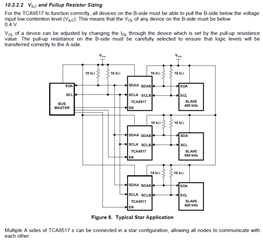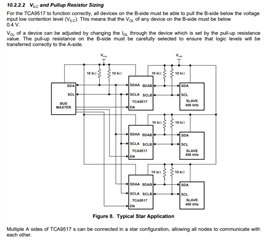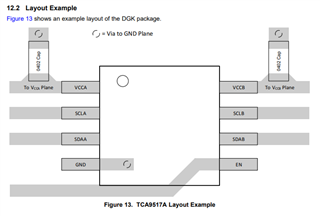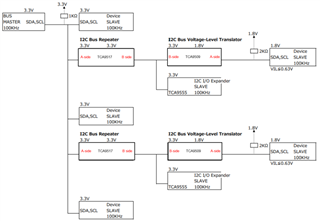Other Parts Discussed in Thread: TCA9800, PCA9306, , TCA9555, TCA9509
I received a request from the designer of equipment by June 21st.
please follow.
PDF is block Diagram.
・Is it use TCA9517 (TCA9517DGKR) in star configuration for B port? ・In the following excerpt from the datasheet, Although the A port side is star-connected. Is it possible to make a star connection on the B port side? Please let me know if there are any points to note in that case.
* There is concerned about the following sentence in the last line.
"Multiple A sides of TCA9517 s can be connected in a star configuration, allowing all nodes to communicate with each other."
・TCA9517 DataSheet
[10.2.2.2 VILC and Pullup Resistor Sizing]

・Condition of use - SDA1, SCL1 side of the voltage translator connect 1.8V. - other 3.3V above.
-- It is concerned about the design. ・Is it possible to star connect the B port side of the TCA9517 (TCA9517DGKR)? ・If possible, are there any precautions for use? ・If it is not possible, the B port will be connected to the SLAVE side,
resulting in a situation where there is almost no low side margin (margin less) for the VIL regulation of the device under the TCA9517 (TCA9517DGKR).
Please advice ・recommended circuit configuration or ・Other part number.
I2C_block_diagram.pdf
Thank you, Best Regards,
Katsumi




